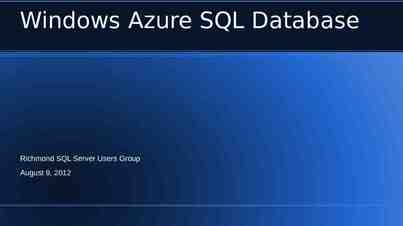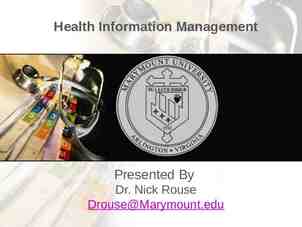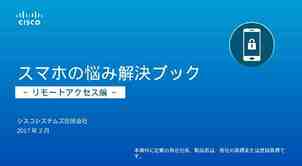กระบวนการ พยาบาล: Writing nursing manuals
58 Slides435.50 KB

กระบวนการ พยาบาล: Writing nursing manuals

คู่มอ ื Correct Cleaar Complete Concise 2

3

4

การเขียนคู่มอ ื การปฏิบต ั ิการ พยาบาล 1) การวางเค้าโครงเรื่อง : การเขียนหลักการและเหตุผล วัตถุประสงค์ของคู่มอ ื ประโยชน์ที่คาดว่า จะได้รบ ั ประเด็นอื่นๆที่เกี่ยวข้อง เช่น พยาธิสรีร ภาพ สาเหตุ การวินิจฉัยโรค การป้องกัน การรักษา การพยากรณ์โรค เป็นต้น

การเขียนคู่มอ ื การปฏิบต ั ิการ พยาบาล 2) การใช้กระบวนการพยาบาล: การประเมิน การตั้งข้อวินิจฉัยทางการพยาบาล การวางแผนการพยาบาล การปฏิบต ั ิการพยาบาล การประเมินผลการพยาบาล

การเขียนคู่มอ ื การปฏิบต ั ิการ พยาบาล 3) การนำกระบวนการพยาบาลสูก ่ าร ปฏิบต ั ิ: การศึกษารายกรณี การอภิปรายผลและสรุป (ปัญหา อุ ปสรรค แนวทางแก้ไขในการปฏิบต ั ิงาน ข้อเสนอแนะ)

ความหมาย กระบวนการพยาบาล หมายถึง ี าร ลำดับขัน ้ ตอนของการดูแลที่มก วางแผนและการปฏิบต ั ิอย่างเป็น ระบบ เพื่อตอบสนองความต้องการ ของผู้ป่วย และแก้ไขปัญหาที่เกิดขึน ้ (White, 2003)

คุณลักษณะ เป็นกรอบแนวคิดในการดูแลผู้ป่วย ครอบครัว ชุมชน ใช้วางแนวทางการดูแลผู้ป่วยแต่ละ รายอย่างเป็นระบบ เน้น client-centered และการใช้ศักยภาพ ของผู้ป่วย มีความเหมาะสมต่อการใช้ตลอด lifespan สามารถใช้ได้กับทุก setting (Craven, 1997)

ขัน ้ ตอน การประเมิน (Assessment) การตั้งข้อวินิจฉัยทางการพยาบาล (Diagnosis) การวางแผนการพยาบาล (Planning) การปฏิบต ั ิการพยาบาล (Intevention) การประเมินผลการพยาบาล (Evaluation)

การประเมิน Assessment กระบวนการในการ รวบรวมข้อมูล รวมทั้งตรวจสอบ และสื่อสารข้อมูลที่เกี่ยวข้องกับผู้ ป่วย

การประเมิน การประเมินต้องครอบคลุม Holistic assessment: กาย จิต สังคม การประเมินโดยทั่วไป ประกอบด้วย ข้อมูลส่วนบุคคล ผู้ดแ ู ล ข้อมูลการส่งต่อ อาการสำคัญ ประวัติปัจจุ บน ั ประวัติอดีต ประวัติครอบครัว ประวัติอ่ ืนๆ เช่น การ แพ้ แบบแผนสุขภาพ

การประเมิน การประเมินโดยทั่วไป ประกอบ ด้วย (ต่อ) การตรวจร่างกาย การตรวจพิเศษ อาการปวด ความต้องการข้อมูล/การเรียนรู้

การรวบรวมข้อมูล 1. ประเภทของข้อมูล (data) (สิง ่ ที่พยาบาล หรือ ทีมสุขภาพ ชัง ่ ตวง วัด) เช่น BP 100/60 mmHg urine ออก 100 cc/24 hrs subjective data (สิง ่ ที่ผู้ป่วย หรือผู้ เกี่ยวข้องบอก) เช่น รูส ้ ก ึ คัน objective data กังวลเรื่องผ่าตัด

การรวบรวมข้อมูล 2. แหล่งข้อมูล Primary source : ได้แก่ ตัวผู้ป่วย Secondary source : ได้แก่ ผู้เกี่ยวข้องใน ครอบครัว ทีมสุขภาพ เวชระเบียน เป็นต้น

การรวบรวมข้อมูล 3. ี ารเก็บรวบรวมข้อมูล วิธก สังเกต (เห็นอะไร) ซักถาม พู ดคุย (ได้ยน ิ อะไร) ตรวจร่างกาย (ดู คลำ เคาะ ฟัง พบอะไร) ตรวจวินิจฉัย (lab ต่างๆพบอะไร)

การวินิจฉัย Nursing diagnosis ข้อความระบุปัญหาที่เกิดขึน ้ หรือ มีแนวโน้มที่จะเกิดขึน ้ และ กระทบต่อสภาวะสุขภาพของผู้ ป่วย (North American Nursing Diagnosis Association : NANDA, 2009)

Definition The North American Nursing Association (NANDA) defines Diagnosis a nursing diagnosis as “A clinical judgment about individual, family or community response to actual and potential health problems and life responses”. 18

การกำหนดข้อวินิจฉัยทางการ พยาบาล Actual Diagnosis: มีขอ ้ มูลหลักฐานแสดง อาการ อาการแสดงชัดเจน Risk Diagnosis: มีขอ ้ มูลของผู้ป่วยที่ เกี่ยวข้องกับปัจจัยเสีย ่ ง แต่ยง ั ไม่มห ี ลักฐาน แสดงชัดเจน Wellness Diagnosis: ไม่มป ี ัญหาสุขภาพ แต่ สามารถเพิม ่ ศักยภาพของบุคคล

การกำหนดข้อวินิจฉัยทางการ พยาบาล Syndrome Diagnosis: มีขอ ้ มูลของผู้ป่วยที่ เกี่ยวข้องกับกลุ่มอาการ ที่ต้องใช้ nursing interventions หลายอย่างร่วมกัน Relocation stress syndrome Collaborative Diagnosis: มีปัญหาสุขภาพ แต่ ต้องการการแก้ไขโดยทีมสุขภาพหลายฝ่ายร่วม กัน Risk for complications of peptic perforation

Health promotion diagnosis A clinical judgment about a person’s, family’s or community’s motivation and desire to increase wellbeing and actualize human health potential as expressed in the readiness to enhance specific health behaviors, and can be used in any health state. An example of a health promotion diagnosis is: Readiness for enhanced nutrition'. 21

เพิม ่ ความตระหนักในการส่ง เสริมสุขภาพขณะตั้งครรภ์ เพิม ่ ศักยภาพการออกกำลังกายที่ เหมาะสมในวัยสูงอายุ เตรียมความพร้อมเพิม ้ ใน ่ มากขึน การปฏิบต ั ิบทบาทมารดา 22

คำถาม คู่มอ ื นี้ เน้น client กลุ่มใด – Chronic, Acute, End of life, Healthy ? กระบวนการพยาบาล ระบุสิง ่ ที่เป็น primary focus ของการดูแล client กลุ่มดังกล่าว หรือไม่ ? ข้อวินิจฉัย ครอบคลุมประเด็น แบบแผนสุขภาพลักษณะใด ? 23

Functional Health Pattern (NANDA) 1. Health Perception -Health Management Pattern 2. Nutrition—Metabolic Pattern 3. Elimination Pattern 4. Activity—Exercise Pattern (Activity/ Rest) 5. Sexuality—Reproduction Pattern 6. Sleep—Rest Pattern 7. Sensory—Perceptual Pattern 8. Cognitive Pattern (Cognition/ Perception) 9. Role—Relationship Pattern 10. Self Perception Pattern 11. Coping -Stress Tolerance Pattern (Safety/ Protection) 12. Value—Belief Pattern (Comfort) 13. Growth and Development Pattern (NANDA, 2014- 24

Health Perception-Health Management Pattern 1- Determine how the client perceives and manages his or her health. 2- Compliance with current and past nursing and, medical recommendations. 3- Ability to perceive the relationship between activities of daily living and health. 25

Nursing Diagnoses Wellness Diagnoses Effective Management of Therapeutic Regimen Risk Diagnoses Risk for Injury Risk for Suffocation Risk for Trauma Actual Diagnoses Altered Growth and Development Ineffective Management of Therapeutic Regimen: Individual Ineffective Management of Therapeutic Regimen: Family Ineffective Management of Therapeutic Regimen: Community Noncompliance 26

Nutritional-Metabolic Pattern Assessing the client's nutritional-metabolic pattern is to determine the client's dietary habits and metabolic needs. 27

Nursing Diagnoses Wellness Diagnoses 0pportunity to enhance nutritional metabolic pattern Opportunity to enhance effective breastfeeding Opportunity to enhance skin integrity Risk Diagnoses Risk for Altered Body Temperature Hypothermia Risk for Infection Risk for altered nutrition less than body requirements . Risk for Aspiration 28

Actual Diagnoses Fluid Volume Deficit Fluid Volume Excess Altered Nutrition: Less than body requirements Altered Nutrition: More than body requirements Ineffective Breastfeeding Altered Oral Mucous Membrane Impaired Skin Integrity. 29

Elimination Pattern Adequacy of the client's bowel and bladder. The client's bowel and urinary habits. Bowel or urinary problems. Use of urinary or bowel elimination devices. 30

Nursing-Diagnoses Wellness Diagnoses Opportunity to enhance adequate bowel elimination pattern Opportunity to enhance adequate urinary elimination pattern Risk Diagnoses Risk for constipation Risk for altered urinary elimination 31

Activity-Exercise Pattern Activities of daily living, including routines of exercise, leisure, and recreation. Activities necessary for personal hygiene, cooking, shopping, eating, maintaining the home, and working. An assessment is made of any factors that affect or interfere with the client's routine activities of daily living. 32

Nursing Diagnoses Wellness Diagnoses Opportunity to enhance effective cardiac output Opportunity to enhance effective self-care activities Opportunity to enhance adequate tissue perfusion Opportunity to enhance effective breathing pattern 33

Risk Diagnoses Risk for Disorganized Infant Behavior Risk for Peripheral Neurovascular Dysfunction Risk for altered respiratory function Actual Diagnoses Activity Intolerance Impaired Gas Exchange Ineffective Airway Clearance Ineffective Breathing Pattern Disuse syndrome Impaired Physical Mobility Inability to Sustain Spontaneous Ventilation Altered Tissue Perfusion 34

Sexuality-Reproduction Pattern Any change or abnormality ? 35

Nursing Diagnoses Wellness Diagnosis: Opportunity to enhance sexuality patterns Risk-Diagnosis Risk for altered sexuality pattern Actual Diagnoses Sexual Dysfunction, Altered Sexuality Patterns 36

Sleep-Rest Pattern Do clients ever experience difficulty with falling asleep? What helps clients to fall asleep? medications? reading? relaxation technique? Watching TV? Listening to music? 37

Nursing Diagnoses Wellness Diagnosis: Opportunity to enhance sleep Risk Diagnosis Risk for sleep pattern disturbance Actual Diagnosis: Sleep Pattern Disturbance 38

Sensory-Perceptual Pattern Describe any difficulty clients have with vision, hearing, and ability to taste or smell. Pain Assessment . 39

Nursing Diagnoses Wellness Diagnosis: Opportunity to enhance comfort level Risk Diagnoses Risk for pain Actual Diagnoses Pain 40

Cognitive Pattern Ability to Understand: Explain what your doctor has told you about your health. Ability to Communicate: Can you tell me how you feel about your health? Ability to Remember: Are you able to remember recent events and events of long ago? Explain. Objective Data Refer to the Mental Status Assessment . 41

Nursing Diagnoses Wellness Diagnosis: Opportunity to enhance cognition Risk Diagnosis: Risk for altered thought processes Actual Diagnoses: Acute confusion Chronic Confusion Knowledge Deficit (ระบุ) Impaired Memory 42

Role-Relationship Pattern Subjective Data Perception of Major Roles and Responsibilities in Family Describe your family. Are there any major problems now? Perception of Major Roles and Responsibilities at Work Describe your occupation. What is your major responsibility at work? Perception of Major Social Roles and Responsibilities Describe your neighborhood and the community in which you live. 43

Nursing Diagnoses Wellness Diagnoses: Opportunity to enhance effective relationships Opportunity to enhance effective communication Risk Diagnoses: High risk for Loneliness Risk for Altered Parent/Infant/Child Attachment Actual Diagnoses: Impaired Verbal Communication Impaired Social Interaction: Social Isolation 44

Coping-Stress Tolerance Pattern Perception of Stress and Problems in Life Describe what you believe to be the most stressful situation in your Life. How has your illness affected the stress you feel? Coping Methods and Support Systems: What helps you to relieve stress and tension? Do you use medication, drugs, or alcohol to help relieve stress? Objective Data Refer to the Mental Status Assessment. 45

Nursing Diagnoses Wellness Diagnoses Opportunity to enhance effective individual coping. Opportunity to enhance family coping Risk Diagnoses: Risk for self-harm Risk for suicide Actual Diagnoses: Ineffective Individual Coping Ineffective Family Coping: Disabling 46

Value-Belief Pattern Religious and Spiritual Beliefs: Are there certain health practices or restrictions that are important for you to follow while you are ill or hospitalized? Explain. Objective Data Observe client's behavior for signs of spiritual distress Anxiety, Anger , Depression , Doubt, Hopelessness and Powerlessness 47

Nursing Diagnoses Wellness Diagnosis: Potential for Enhanced Spiritual Well-Being Risk diagnosis: Risk for spiritual distress Actual Diagnosis: Spiritual disturbance (distress of the human spirit). 48

Growth and Development Pattern การเจริญเติบโต (Growth ) การเจริญเติบโตไม่สมส่วน (disproportionate growth) พัฒนาการ (Development ) พัฒนาการช้า/ไม่เหมาะสมกับช่วงวัย (Delayed growth and development) 49

Nursing Diagnoses Wellness Diagnosis: Potential for Enhanced Spiritual Well-Being Risk diagnosis: Risk for spiritual distress Actual Diagnosis: Spiritual disturbance (distress of the human spirit). 50

การวางแผนการพยาบาล (Planning) การจัดลำดับความสำคัญของปัญหา การกำหนดจุ ดมุง ่ หมายทางการพยาบาล และเกณฑ์การประเมินผล การกำหนดกิจกรรมการพยาบาล การเขียนแผนการพยาบาล

การเขียนเกณฑ์การประเมินผล พฤติกรรมผู้รบ ั บริการ เกณฑ์ที่คาดหวัง ต้องสามารถ วัดได้ ระยะเวลา เงื่อนไข

แนวทางในการเขียนเกณฑ์การ ประเมินผล มีความสมเหตุสมผลในด้านความสามารถของ ผู้รบ ั บริการ เป็นพฤติกรรมที่ผู้รบ ั บริการสามารถสังเกตหรือ วัดได้ หลีกเลี่ยงการใช้คำว่า ดี เพียงพอ เขียนเกณฑ์การประเมินผลในรูปพฤติกรรมของ ผู้รบ ั บริการ ไม่ใช่กิจกรรมการพยาบาล สัน ้ มีความเฉพาะเจาะจง และระยะเวลาที่จะบรรลุ เกณฑ์ที่คาดหวัง

ชนิดของกิจกรรมการพยาบาล กิจกรรมการพยาบาลอิสระ (Independent) กิจกรรมการพยาบาลที่ไม่เป็นอิสระ (Dependent) กิจกรรมการพยาบาลกึ่งอิสระ (Interdependent)

แนวทางปฏิบต ั ิ การช่วยเหลือหรือกระทำแทน การกระตุ้นหรือสนับสนุน การสอน การให้คำปรึกษา การส่งต่อ

การประเมินผลการพยาบาล การประเมินผลขณะปฏิบต ั ิการพยาบาล (Formation Evaluation) การประเมินผลเมื่อสิน ้ สุดการพยาบาล (Summative Evaluation)

ขั้นตอนการประเมินผลการ พยาบาล บันทึกการตอบสนองของผู้รบ ั บริการต่อ การปฏิบต ั ิการพยาบาล การประเมินผลสัมฤทธิข ั ิ ์ องการปฏิบต การพยาบาล ตรวจสอบ / ทบทวนแผนการพยาบาลซ้ำ

ปัญหาและอุ ปสรรค ไม่ครอบคลุมขัน ้ ตอนของ กระบวนการพยาบาล ความไม่ชด ั เจนในแต่ละขัน ้ ตอน ของกระบวนการพยาบาล: การ วินิจฉัยการพยาบาล และการ วางแผน ความไม่ครอบคลุมของการ พยาบาลแบบองค์รวม






